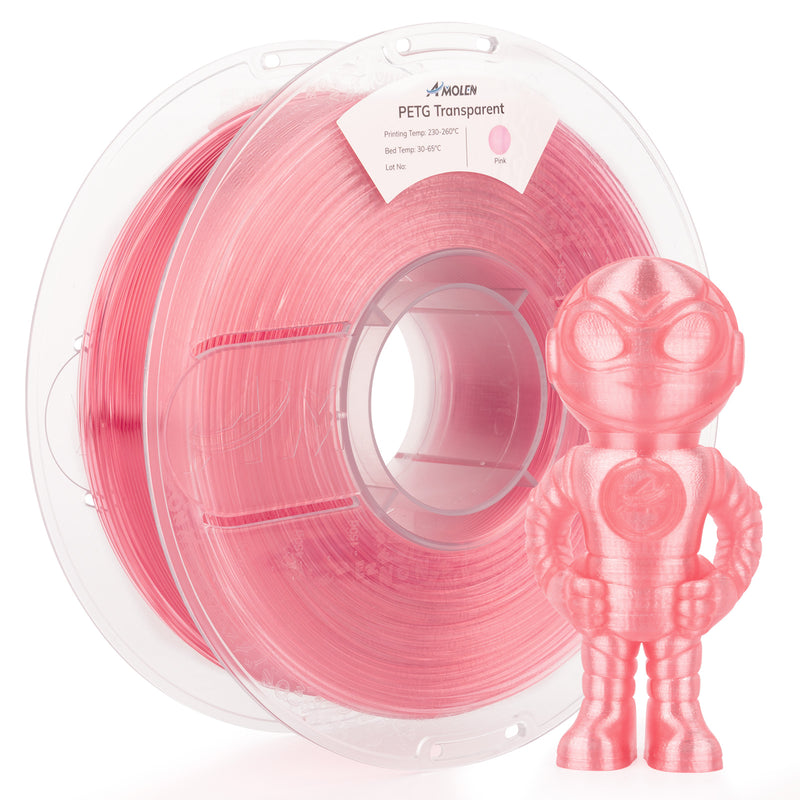Unlock the Secrets of PETG: Revolutionize Your 3D Printing Experience!
In the ever-evolving world of 3D printing, the materials we choose can make all the difference in the quality and functionality of our prints. One filament that has gained significant traction among enthusiasts and professionals alike is PETG, or Polyethylene Terephthalate Glycol. Known for its unique balance of strength, flexibility, and ease of use, PETG is quickly becoming a go-to choice for 3D printing projects ranging from prototypes to functional parts. This article aims to delve into the properties, benefits, and practical tips for using PETG filament, providing you with the knowledge needed to enhance your 3D printing experience.

Understanding PETG Filament
PETG filament is a type of thermoplastic polyester that combines the best attributes of its counterparts, namely PLA and ABS. It is derived from the same base materials as PET, commonly used in beverage bottles, but is modified with glycol to enhance its performance in 3D printing. This chemical composition gives PETG its unique properties, such as reduced brittleness, increased impact resistance, and improved clarity. Unlike PLA, which is biodegradable but can be brittle, and ABS, which can be challenging to print due to warping, PETG presents a middle ground, making it an ideal filament for a variety of applications. Friends who have ventured into printing with PETG often highlight its user-friendly nature, especially for those transitioning from PLA.
Properties of PETG Filament
The standout properties of PETG filament make it a favored choice among 3D printing enthusiasts. One of its primary characteristics is its strength; PETG boasts excellent tensile strength, allowing prints to withstand considerable stress without breaking. Additionally, PETG is known for its flexibility, which means it can bend under pressure without cracking, a feature that is particularly useful for creating functional parts like brackets or clips. Temperature resistance is another key property; PETG can endure higher temperatures compared to PLA, making it suitable for applications that may encounter heat. Furthermore, its clarity allows for aesthetically pleasing prints, ideal for items where transparency is desired. A friend once printed a clear protective case using PETG, and the results were impressive, showcasing the material's clarity and resilience.
Benefits of Using PETG Filament
The advantages of using PETG filament extend beyond its impressive properties. One of the most appealing aspects is the ease of printing it offers. PETG adheres well to the print bed, reducing the risk of warping—a common issue with other filaments like ABS. This makes it a suitable option for both beginners and seasoned printers looking for reliable results. Moreover, PETG is highly durable, making it ideal for functional parts that require longevity and toughness. From an environmental perspective, PETG is also considered a more eco-friendly option compared to some other plastics, as it can be recycled. Friends of mine who have switched to PETG have noticed not only improved print quality but also a more sustainable approach to their 3D printing projects.
How to Use PETG Filament in 3D Printing
To achieve the best results when printing with PETG filament, understanding the necessary settings and practices is crucial. Firstly, ensuring that your 3D printer is compatible with PETG is essential; most modern printers should handle it without issues. Recommended print temperatures typically range from 220°C to 250°C, and it’s advisable to start at the lower end and adjust based on your specific printer and environment. The print bed should ideally be heated to around 70°C to enhance adhesion. For the best results, a glass or PEI surface works well. Additionally, maintaining a consistent flow rate and adjusting the retraction settings can help in minimizing stringing, which is a common issue with PETG. A friend of mine found success by experimenting with these settings, leading to smoother prints without excessive stringing.
Common Challenges and Solutions
While PETG is known for its ease of use, it’s not without challenges. One common issue is warping; however, this can often be mitigated by ensuring proper bed adhesion and temperature settings. Additionally, stringing can occur if the retraction settings are not optimized. To combat this, adjusting the retraction distance and speed can lead to cleaner prints. My experience with a friend's printer showed that keeping the filament dry also plays a significant role in print quality, as PETG can absorb moisture over time.
Embracing PETG for Enhanced 3D Printing
In summary, PETG filament stands out as a versatile and reliable material for 3D printing enthusiasts. With its excellent strength, flexibility, and temperature resistance, it offers numerous advantages over other filament types. The ease of printing and environmental considerations further enhance its appeal, making it a valuable addition to any 3D printer's repertoire. Whether you're a beginner just starting out or a seasoned pro looking to expand your material horizons, adopting PETG filament can undoubtedly revolutionize your 3D printing experience. Embrace the benefits of PETG and watch your creative projects come to life!







